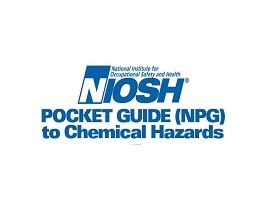Chloroform

Overview
CAS No. 67-66-3
Chloroform (CHCl3) is a colorless liquid that quickly evaporates into gas. It can harm the eyes, skin, liver, kidneys, and nervous system. Chloroform can be toxic if inhaled or swallowed. Exposure to chloroform may also cause cancer. Workers may be harmed from exposure to chloroform. The level of exposure depends upon the dose, duration, and work being done.
Chloroform is used in many industries. It is released from pulp and paper mills, hazardous waste sites, chlorinated water, and certain landfills. Chloroform is used in some refrigerants, solvents, and chemical manufacturing. Some examples of workers at risk of being exposed to chloroform include the following:
- Workers involved in paper manufacture or recycle industries
- Service employees exposed to some air conditioner refrigerants
- Equipment operators working at sanitary landfills
- Workers who work in water treatment plants
NIOSH recommends that employers use Hierarchy of Controls to prevent injuries. If you work in an industry that uses chloroform, please read chemical labels and the accompanying Safety Data Sheets for hazard information. Visit NIOSH’s page on Managing Chemical Safety in the Workplace to learn more about controlling chemical workplace exposures.
The following resources provide information about occupational exposure to chloroform. Useful search terms for chloroform include “methane trichloride” and “trichloromethane.”
NIOSH Chemical Resources
Related NIOSH Resources
- NIOSHTIC-2 search results on chloroform—NIOSHTIC-2 is a searchable database of worker safety and health publications, documents, grant reports, and journal articles supported in whole or in part by NIOSH.
- Immediately Dangerous to Life or Health Concentrations (IDLH) Value Profile: Chloroform—NIOSH reviews relevant scientific data and researches methods for developing IDLH values.
- NIOSH Worker Health Study Summaries—NIOSH conducts research to prevent illnesses and injuries in the workplace. The NIOSH Worker Notification Program notifies workers and other stakeholders about the findings of these research studies.
Selected Publications
- NIOSH Criteria for a Recommended Standard: Occupational Exposure to Chloroform—DHHS (NIOSH) Publication No. 75-114. This report increases awareness and recommends work practices to reduce exposures.
- NIOSH Revised Recommended Chloroform Standard
- Occupational Health Guideline for Chloroform—This guideline is intended as a source of information for employees, employers, and those in the health professions who need more information on exposure to chloroform.
- Hydrocarbons, Halogenated No. 1009—Sampling and measurement from NMAM, fourth edition
Related Resources
- ATSDR ToxFAQs for Chloroform
- ATSDR Toxic Substance Portal: Chloroform
- ATSDR Toxicological Profile for Chloroform
- EPA Acute Exposure Guideline Levels (AEGLs): Chloroform
- EPA Chemistry Dashboard: Chloroform
- EPA Hazard Summary: Chloroform
- EPA Integrated Risk Information System (IRIS): Chloroform
- IARC Monographs Vol. 73: Chloroform
- NLM Haz-Map: Chloroform
- NLM TOXNET: Chloroform
- NTP Report on Carcinogens, Fourteenth Edition
- OSHA Hazard Communication
- OSHA Health and Safety Topics: Waste Anesthetic Gases
- OSHA Sampling and Analytical Method: Chloroform
- New Jersey Hazardous Substance Fact Sheets: Chloroform
International Resources
- European Chemicals Agency (ECHA): Chloroform
- Gestis Substance Database
- International Chemical Safety Card: Chloroform
- IPCS INCHEM Health and Safety Guide No. 87: Chloroform
- IPCS INCHEM Poison Information Monograph No. 121: Chloroform
- OECD Global Portal to Information on Chemical Substances
- WHO CICAD No. 58: Chloroform



